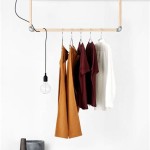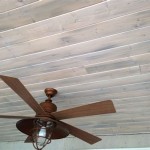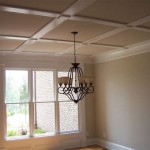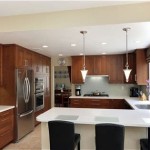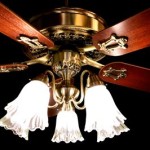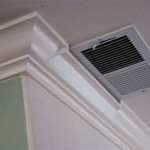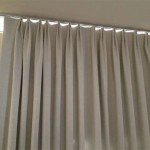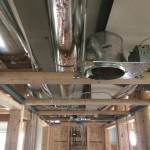Covering Popcorn Ceilings With Beadboard Panels in Singapore
Popcorn ceilings, also known as acoustic ceilings, were a popular design choice in Singapore during the late 20th century. They were favored for their sound-dampening qualities and ability to conceal imperfections on the ceiling surface. However, their aesthetic appeal has diminished over time, and many homeowners now seek ways to update these outdated ceilings. One increasingly popular solution is covering popcorn ceilings with beadboard panels. This article will explore the process of covering popcorn ceilings with beadboard panels, focusing on considerations specific to the Singaporean context, including climate, materials, and regulatory standards.
Beadboard panels offer a visually appealing and relatively straightforward method for covering popcorn ceilings. They consist of vertical planks with a decorative ridge, known as a bead, running between each plank. When installed, beadboard panels create a textured and classic look that can complement various interior design styles. This method avoids the messy and potentially hazardous process of removing the popcorn texture, which can contain asbestos in older buildings, a concern particularly relevant in Singapore where many older properties still exist.
Advantages of Using Beadboard Panels
Employing beadboard panels to address popcorn ceilings provides several key advantages. First, it eliminates the need for popcorn ceiling removal. This is beneficial because removing popcorn ceilings can be a laborious process, often requiring specialized equipment and safety precautions, especially if asbestos is present. In Singapore, engaging professional asbestos abatement services adds significant cost and complexity to the project.
Second, beadboard panels offer a clean and aesthetically pleasing finish. They can instantly transform a dated ceiling into a modern and stylish feature. The panels are available in various materials, including wood, MDF (medium-density fiberboard), and PVC (polyvinyl chloride), allowing homeowners to choose a material that suits their budget, design preferences, and functional needs. For example, PVC beadboard panels are particularly suitable for Singapore's humid climate due to their moisture resistance.
Third, the installation process, while requiring some skill and effort, is generally less disruptive and time-consuming than popcorn ceiling removal and subsequent ceiling repair. This is particularly important in Singapore, where space is limited and minimizing disruption to daily life is a key consideration for homeowners. The installation can often be completed within a few days, depending on the size of the room and the complexity of the project.
Finally, beadboard panels provide an additional layer of insulation, which can contribute to energy savings in Singapore's hot and humid climate. While the insulation benefits are modest, they can still help to reduce reliance on air conditioning and lower energy bills over time. This thermal benefit, coupled with the improved aesthetics, makes beadboard a compelling option for many Singaporean homeowners.
Considerations Before Installation
Prior to installing beadboard panels over a popcorn ceiling in Singapore, several critical factors must be considered. The first and arguably most important is the potential presence of asbestos. If the building was constructed before the mid-1980s, there is a strong possibility that the popcorn ceiling contains asbestos. Disturbing asbestos-containing materials can release harmful fibers into the air, posing serious health risks. In such cases, it is imperative to engage a licensed asbestos surveyor to conduct testing. If asbestos is confirmed, professional abatement is required before any further work can proceed.
The second consideration is the structural integrity of the existing ceiling. Before installing beadboard panels, it is essential to inspect the ceiling for signs of water damage, cracks, or sagging. Any structural issues must be addressed before proceeding with the installation, as the added weight of the beadboard panels could exacerbate existing problems. In Singapore, where humidity levels are high, water damage is a common concern, so thorough inspection is crucial.
The third factor is the ceiling height. Beadboard panels will lower the ceiling height slightly, typically by an inch or two. In Singapore, where apartment sizes can be relatively small and ceiling heights may already be limited, this reduction in height should be carefully considered. If the ceiling height is already low, using thinner beadboard panels or exploring alternative solutions might be necessary to avoid making the room feel cramped.
Another important consideration is the selection of appropriate materials for Singapore's climate. As previously mentioned, PVC beadboard panels are highly resistant to moisture and humidity, making them a suitable choice for bathrooms and kitchens. Wood beadboard panels can be used in other areas of the home, but they should be properly sealed and treated to prevent warping or rotting due to humidity. MDF beadboard panels are a more affordable option, but they are less resistant to moisture than PVC or wood and should be used in dry areas only.
Finally, it is important to consider the lighting and electrical fixtures. Prior to installation, any existing lighting fixtures or smoke detectors must be removed. The beadboard panels will need to be carefully cut to accommodate these fixtures, and new wiring may need to be installed to ensure proper functionality. Engaging a qualified electrician is recommended to handle any electrical work, ensuring compliance with Singapore's electrical safety regulations.
Installation Process
The installation of beadboard panels over a popcorn ceiling typically involves several steps. First, the ceiling needs to be properly prepared. This includes cleaning the surface to remove any dust or debris and ensuring that it is as level as possible. Minor imperfections can be addressed by applying shims or patching any cracks or holes.
Next, furring strips, which are thin strips of wood, are attached to the existing ceiling. These strips provide a level surface for attaching the beadboard panels and create an air gap between the popcorn ceiling and the panels. The furring strips should be spaced evenly apart, typically 12 to 16 inches, and securely fastened to the ceiling joists using screws or nails. In Singapore, it is crucial to use corrosion-resistant fasteners to prevent rust due to the high humidity.
Once the furring strips are in place, the beadboard panels can be installed. The panels are typically attached to the furring strips using nails, screws, or construction adhesive. It is important to ensure that the panels are aligned properly and that the seams are tight and flush. In some cases, it may be necessary to cut the panels to fit around corners or obstacles. A saw with a fine-tooth blade is recommended for making clean and accurate cuts. Careful measurement and planning are essential to avoid wasting materials.
After all the beadboard panels have been installed, the seams and nail holes should be filled with wood filler or caulk. This will create a smooth and seamless finish. Once the filler or caulk has dried, the panels can be sanded smooth and primed. Finally, the panels can be painted or stained to achieve the desired look. In Singapore, it is important to use high-quality paints or stains that are resistant to moisture and fading.
Installing beadboard panels over a popcorn ceiling is a viable option for homeowners in Singapore looking to update their ceilings without the hassle of removing the existing texture. However, careful planning and consideration of factors such as asbestos, structural integrity, and material selection are essential to ensure a successful and safe installation.

The Best Way To Cover Popcorn Ceilings With Beadboard Shoe Makes New

How To Cover Popcorn Ceilings With Beadboard

How To Cover Popcorn Ceiling With Beadboard Planks Diy Tutorial

The Best Way To Cover Popcorn Ceilings With Beadboard Shoe Makes New

How To Cover Popcorn Ceilings With Beadboard

Decorative Ideas To Cover Popcorn Ceilings Artsy Rule

Cover Popcorn Ceilings Armstrong Residential

The Best Way To Cover Popcorn Ceilings With Beadboard Shoe Makes New

How To Cover Popcorn Ceilings With Armstrong Ceiling Planks And Easy Up System Organized Ish

Diy Beadboard Ceiling Tutorial Easy And Inexpensive Custom Treatment
Related Posts

